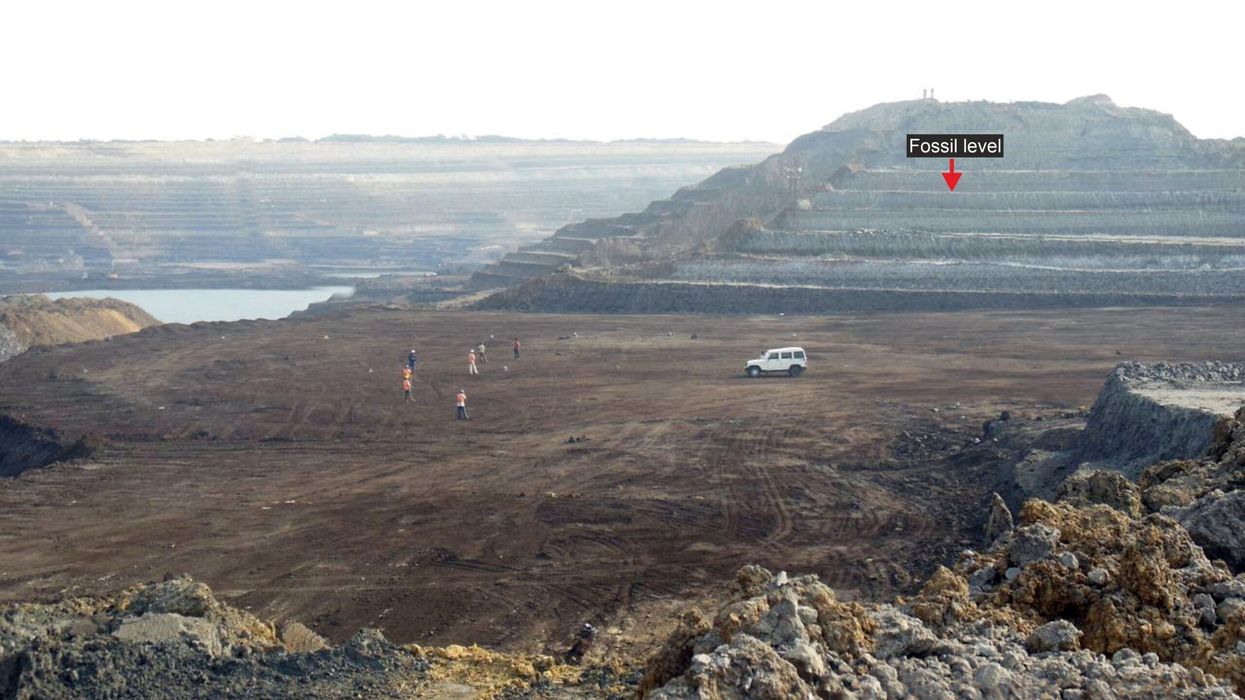IN THE lignite-rich depths of a mine in Gujarat, India, paleontologists have unearthed the vertebrae of what might be one of the largest snakes ever to slither on Earth. This giant snake, named Vasuki indicus, stretched up to 49 feet (15 metres) in length and roamed the Indian swamps approximately 47 million years ago, during an era when the planet was much warmer.
The find comprises 27 vertebral fossils, some of which remained aligned as they likely were in life, suggesting the snake's massive size. According to researchers, Vasuki would have resembled today's large pythons and relied on its size and strength rather than venom to capture prey.

This significant discovery occurred in the Panandhro area of Kutch district, within the western Indian state of Gujarat, where lignite, a form of coal, is mined.
"Given its enormous size, Vasuki was likely a slow-moving ambush predator, akin to how modern anacondas and pythons hunt, using constriction to subdue prey," said Debajit Datta, the study's lead author and a postdoctoral researcher at the Indian Institute of Technology Roorkee (IITR). The findings were published in the journal Scientific Reports.
Due to the incomplete nature of the fossils, estimates of Vasuki's length range from 36 to 49 feet (11 to 15 metres), and its weight was roughly a metric ton.
Vasuki shares its namesake with the mythological serpent associated with the Hindu deity Shiva and is comparable in size to the Titanoboa, a giant snake discovered in Colombia in 2009. The Titanoboa lived around 58-60 million years ago and reached lengths of about 42 feet (13 metres).
"While the body lengths of Vasuki and Titanoboa are similar, Titanoboa's vertebrae were slightly larger," said Sunil Bajpai, a paleontologist and co-author of the study from IITR. "It is still uncertain whether Vasuki was more robust or slender compared to Titanoboa."
These colossal snakes thrived during the Cenozoic era, which followed the extinction of the dinosaurs 66 million years ago. The largest known specimen of Tyrannosaurus rex, named Sue and displayed at the Field Museum in Chicago, measures 40-1/2 feet (12.3 metres) long, though it was more massive than these giant snakes.
The largest Vasuki vertebra measured about 4-1/2 inches (11.1 cm) wide, and the snake's body was estimated to be around 17 inches (44 cm) in diameter, though its skull remains undiscovered.
"Vasuki was a majestic animal, likely spending much of its day coiled up or moving slowly through its swampy environment," Datta said, comparing it to Kaa from "The Jungle Book."
While the specific diet of Vasuki remains speculative, it likely included crocodilians, with other fossils from the area indicating a diverse ecosystem that included turtles, fish, and primitive whales like Kutchicetus and Andrewsiphius.
Vasuki belonged to the Madtsoiidae family, a group of snakes that originated about 90 million years ago and became extinct around 12,000 years ago. These snakes spread across Eurasia and North Africa after the Indian subcontinent collided with Eurasia about 50 million years ago.
(Reuters)














